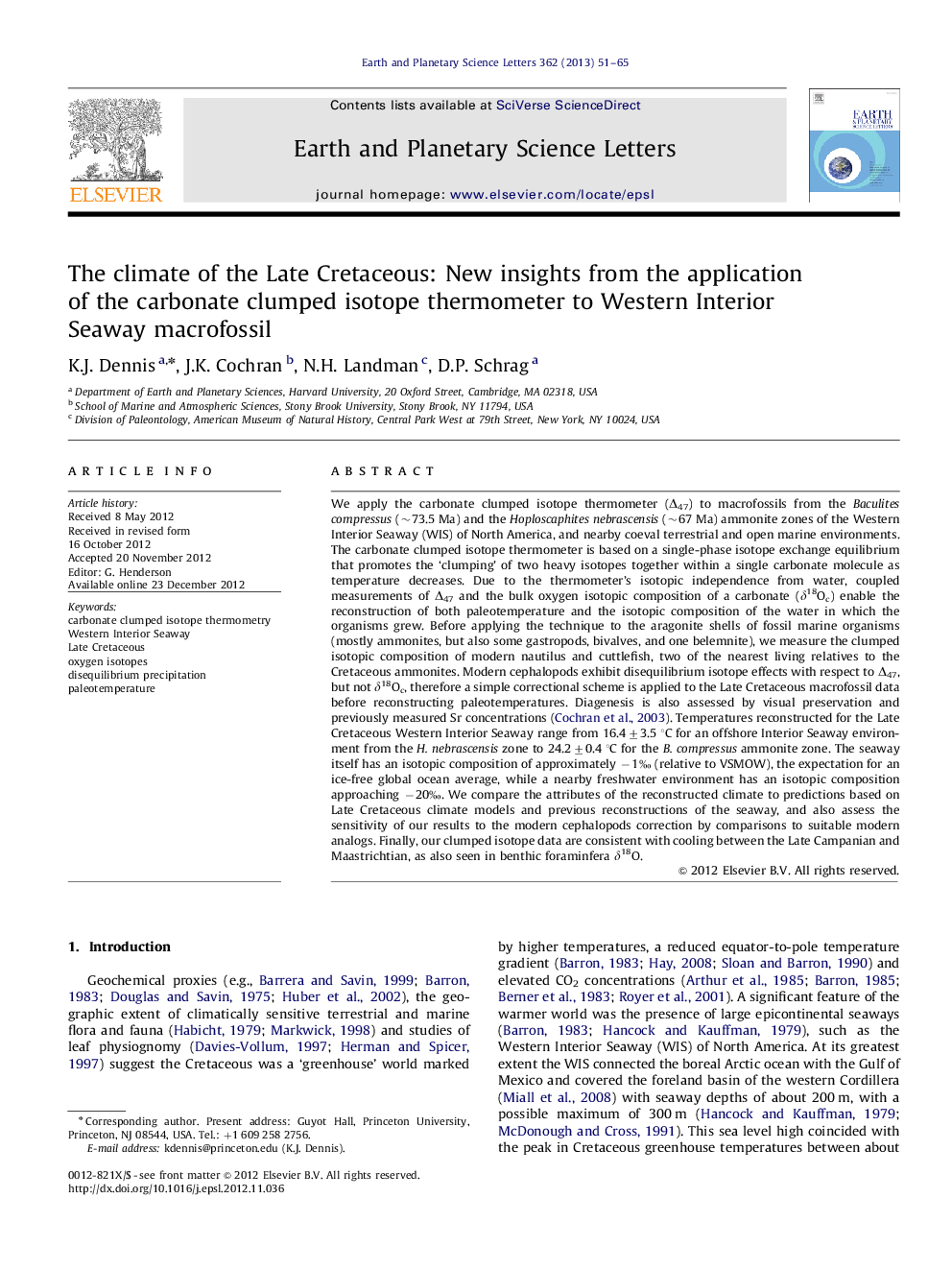| کد مقاله | کد نشریه | سال انتشار | مقاله انگلیسی | نسخه تمام متن |
|---|---|---|---|---|
| 4677244 | 1634791 | 2013 | 15 صفحه PDF | دانلود رایگان |
We apply the carbonate clumped isotope thermometer (Δ47) to macrofossils from the Baculites compressus (∼73.5 Ma) and the Hoploscaphites nebrascensis (∼67 Ma) ammonite zones of the Western Interior Seaway (WIS) of North America, and nearby coeval terrestrial and open marine environments. The carbonate clumped isotope thermometer is based on a single-phase isotope exchange equilibrium that promotes the ‘clumping’ of two heavy isotopes together within a single carbonate molecule as temperature decreases. Due to the thermometer's isotopic independence from water, coupled measurements of Δ47 and the bulk oxygen isotopic composition of a carbonate (δ18Oc) enable the reconstruction of both paleotemperature and the isotopic composition of the water in which the organisms grew. Before applying the technique to the aragonite shells of fossil marine organisms (mostly ammonites, but also some gastropods, bivalves, and one belemnite), we measure the clumped isotopic composition of modern nautilus and cuttlefish, two of the nearest living relatives to the Cretaceous ammonites. Modern cephalopods exhibit disequilibrium isotope effects with respect to Δ47, but not δ18Oc, therefore a simple correctional scheme is applied to the Late Cretaceous macrofossil data before reconstructing paleotemperatures. Diagenesis is also assessed by visual preservation and previously measured Sr concentrations (Cochran et al., 2003). Temperatures reconstructed for the Late Cretaceous Western Interior Seaway range from 16.4±3.5 °C for an offshore Interior Seaway environment from the H. nebrascensis zone to 24.2±0.4 °C for the B. compressus ammonite zone. The seaway itself has an isotopic composition of approximately −1‰ (relative to VSMOW), the expectation for an ice-free global ocean average, while a nearby freshwater environment has an isotopic composition approaching −20‰. We compare the attributes of the reconstructed climate to predictions based on Late Cretaceous climate models and previous reconstructions of the seaway, and also assess the sensitivity of our results to the modern cephalopods correction by comparisons to suitable modern analogs. Finally, our clumped isotope data are consistent with cooling between the Late Campanian and Maastrichtian, as also seen in benthic foraminfera δ18O.
► Clumped isotope thermometry is applied to Late Cretaceous macrofossils.
► Clumped isotope disequilibrium is found in modern nautilus and cuttlefish.
► Population average reconstructed temperatures are between 16 and 24 °C.
► The isotopic composition of the WIS approximates the ice-free global ocean average.
► The isotopic composition of a freshwater environment approaches −20‰.
Journal: Earth and Planetary Science Letters - Volume 362, 15 January 2013, Pages 51–65
